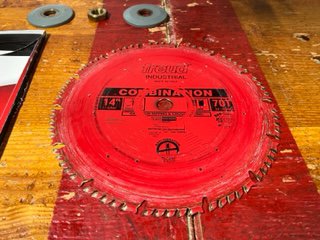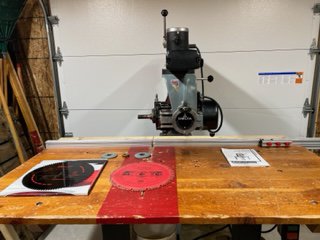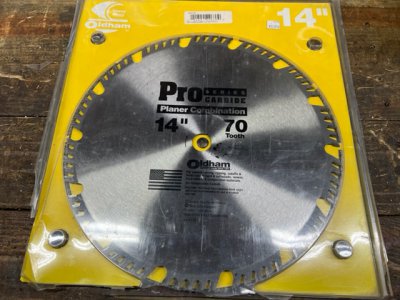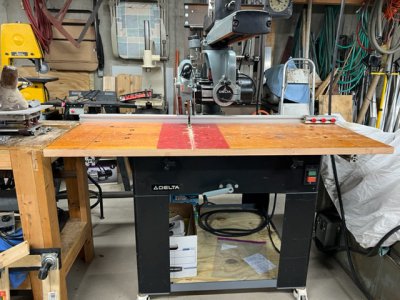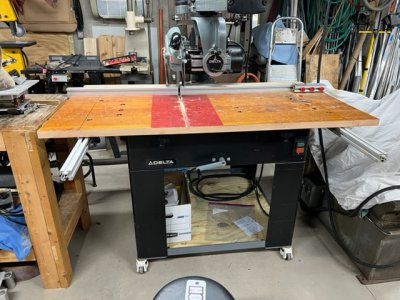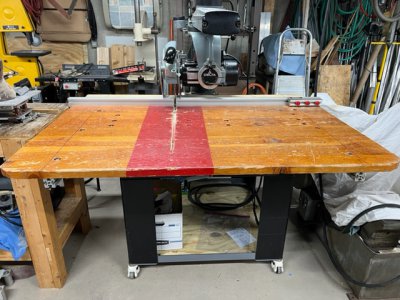I finished setting up the saw for the pier project yesterday. The last things to do were to install a new blade and level the table. The table is far from perfect, but good hopefully enough for the project at hand. As I mentioned in another post the table is made from 1 1/4 x 6" white oak boards. The saw was built into a countertop. When it was removed there was no support at either end. Consequently, the table has a tendency to droop at the ends. It is also drooping at the front. That is in part due to the braces that had to be removed for access to the power box.
Now that the new power cord is installed, and the box is wired correctly I reinstalled the braces. They do minimize the front to back drop, but given they are 2 1/2" x 4" white oak they are heavy and add to the problem of side-to-side droop. I was able to minimize the droop to around .005" in both directions. I say "about .005" in that there are interruptions on the top from past abuse. I'm not sure that degree of levelness would be acceptable in the cabinet making world, but it should certainly be good enough for some pier planking.
I also installed one of the new blades. This one is a Gmaxx 14" crosscut blade with 100 teeth. The teeth have a triple chip grind and a negative 2* rake. I haven't had a chance to try it out yet. It's only 18* outside. That's a little cool to be opening the garage doors and positioning the saw to cut some boards. Today's high is only supposed to be in the low 20's. Tomorrow it's supposed to go back to the mid 30's. If it actually makes it that high, I'll do a few test cuts.
As luck would have it, we were about an hour from home when the additional blades I ordered were delivered. The complete inventory will include 2 crosscut blades, 2 ripping blades, and 2 combination blades. I purchased 2 of each style to hopefully eliminate downtime when a blade needs sharpening. There's no one in the area that does triple chip or alternative top bevel grinds on 14" blades. The closest places are Sheboygan or Fon Du Lac. Turnaround time is usually a week or two depending on their workload.
The original blade has some interesting deposits on the sides. It looks like white paint or plastic but can easily be removed by scratching it with a fingernail. I tried a little WD40, but it didn't touch the deposits. Here are some pictures of the saw as the saw stands today as well as the original and one of the new blades. Note the white streaks on the perimeter of the old (Freud) blade. If anyone has some suggestions as to what might work without removing the anti-stick coating, I would appreciate hearing them.


